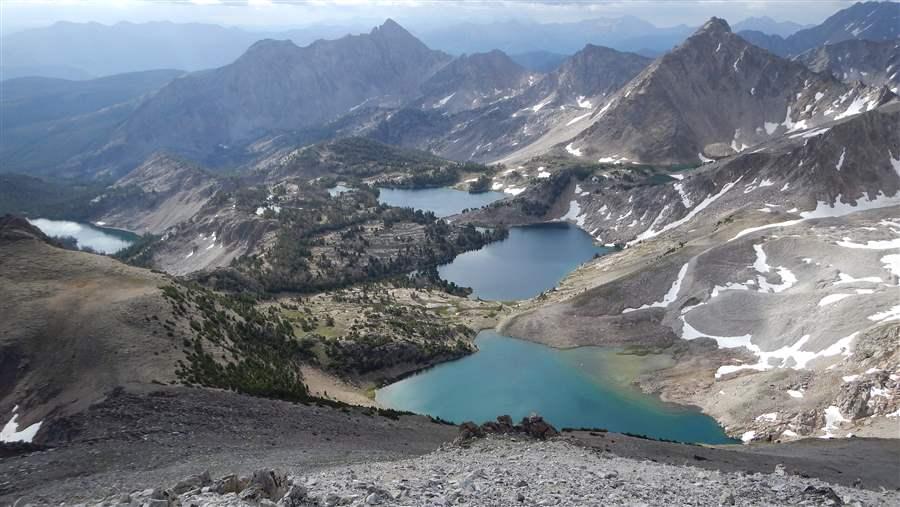Boulder-White Clouds Win: Idaho ‘Gem’ Protected as Wilderness
President Obama signs bill giving 275,000 acres ‘strongest protection’
 The Pew Charitable Trusts
The Pew Charitable TrustsMore than 150 mountains surpassing 10,000 feet stud Idaho's Boulder-White Clouds region.
Central Idaho's Boulder-White Clouds region was once among the largest unprotected wild places in the Lower 48 states. But now—thanks to legislation signed into law by President Barack Obama on Aug. 7—Boulder-White Clouds is safeguarded as wilderness, the strongest protection available for a national landscape.
The centerpiece of the Sawtooth National Recreation Area and Jerry Peak Wilderness Additions Act, the Boulder-White Clouds designation protects more than 275,000 acres of public land for future generations, while promoting recreational activities that drive local economies and facilitate the voluntary retirement of eligible grazing permits.
It all adds up to a big win for Americans who treasure this natural gem's skyscraping peaks, alpine lakes, and flower-filled meadows—not to mention its world-famous hunting, fishing, and other recreational activities.
Haven for Outdoor Recreation
With more than 150 mountains surpassing 10,000 feet, Boulder-White Clouds has an alpine ecosystem and large roadless core that support rare flora and fauna and provide critical habitat for animals such as elk, moose, and bighorn sheep—making the area a premier destination for hunting.
The region also is an important spawning area for fish. Steelhead trout in and near the Boulder-White Clouds have their species' longest migration, as do Snake River sockeye salmon.
Idaho's outdoor recreation economy generates $461 million in state and local tax revenue, drives $1.8 billion in wages and salaries, and supports 77,000 direct jobs, according to the Outdoor Industry Association. Kayakers, snowmobilers, all-terrain vehicle users, dirt bikers, mountain bikers, campers, hikers, and sportsmen are leaving behind more than footprints when they visit the state.
The Boulder-White Clouds wilderness designation is the latest in a string of public land conservation successes in 2015, including the establishment of Nevada's Basin and Range National Monument in July and Colorado's Browns Canyon National Monument in February.
Much work remains, however. Only 2.5 percent of U.S. federal public land outside Alaska is permanently protected as wilderness—free of roads and industrial development and forever available for hiking, hunting, fishing, and other pursuits.







